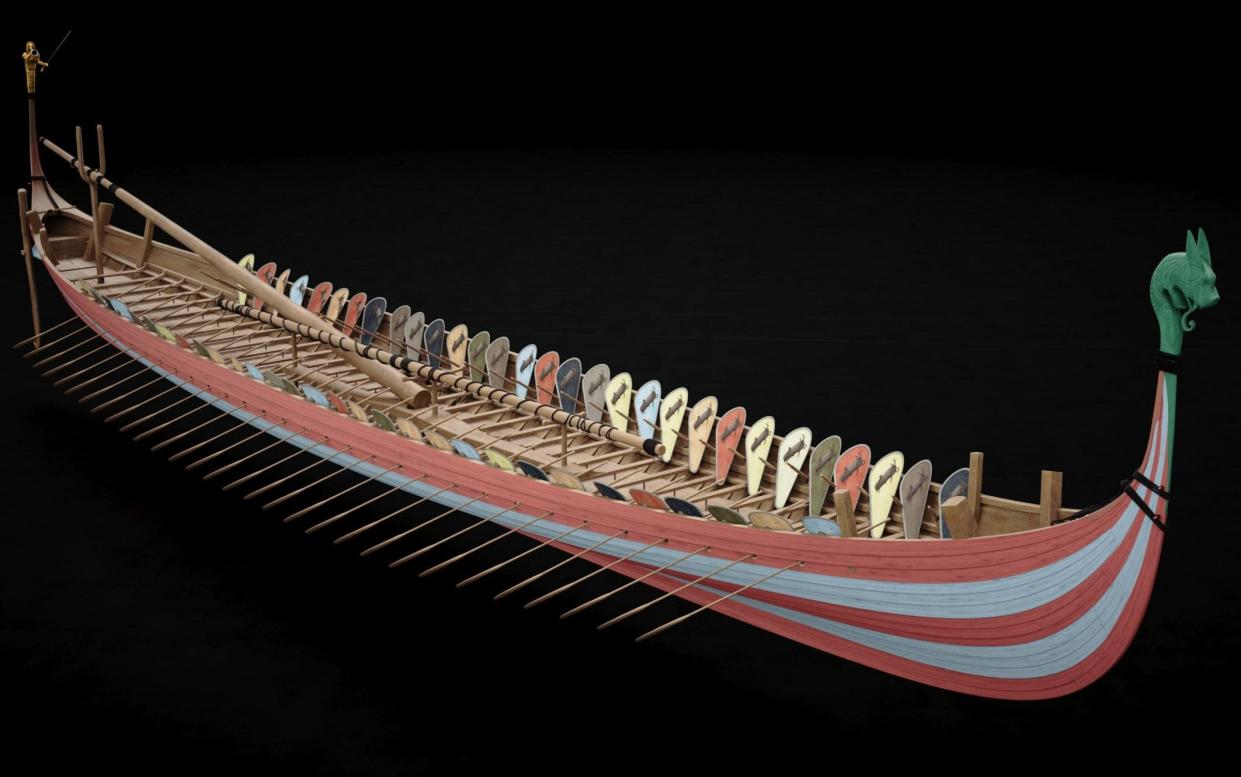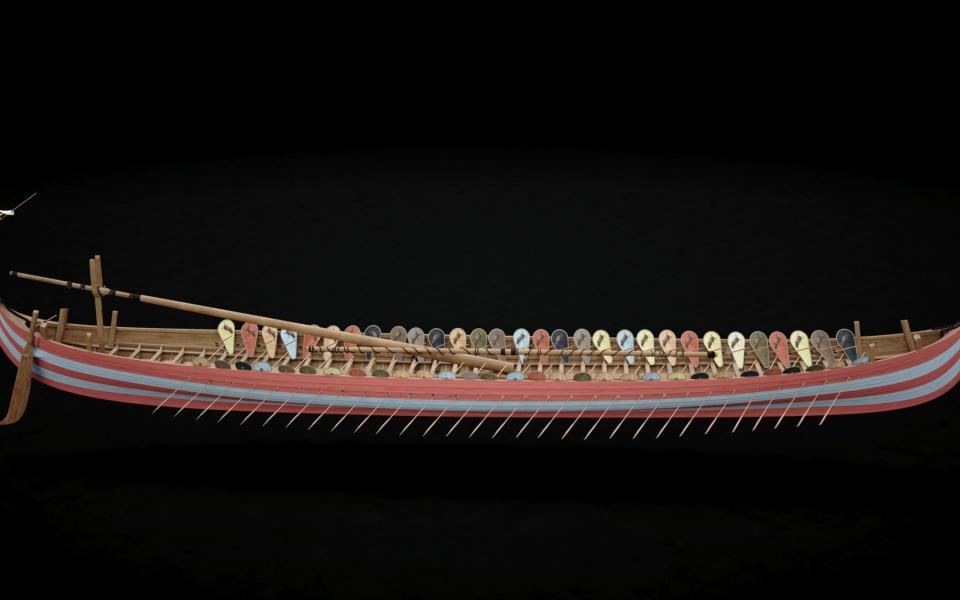Norman conquest boat project could be dead in the water - because of EU red tape

- Oops!Something went wrong.Please try again later.
When William the Conqueror set off from Normandy to invade England in 1066, it was a mammoth undertaking.
But nearly 1,000 years later, an ambitious project to sail a replica of La Mora, the flagship of his vast fleet, across the Channel is facing a new hurdle that he could have never foreseen: EU bureaucracy.
It may not look like a “pleasure boat”, but project managers rebuilding the Viking-style longship say its size means it comes under that category and therefore is subject to EU safety regulations.
That means it will only be able to leave France if the EU certifies it is fit to sail on the Channel, according to its makers.
“European standards obviously do not take into account 11th-century ships. However, La Mora’s 34-metre length makes it a large pleasure boat. We are working with the [European Commission’s] Maritime Affairs to find technical solutions to meet current safety standards,” said naval architect Marc Ronet, who is overseeing the project and drew up the initial plans for La Mora II.
Mr Ronet said the original boat was a narrow, shallow Viking-type warship, powered by oar and a 150-square metre sail. It was so fast that after setting sail from Saint-Valéry-sur-Somme on the evening of 27 September 1066, William had time to tuck into breakfast with wine before the rest of his fleet, which was carrying more than 7,000 men and 2,000 horses, caught up the next morning.
The fleet landed at Pevensey in East Sussex later that day and went on to defeat King Harold at the Battle of Hastings on 14 October. William, Duke of Normandy, became William the Conqueror, King of England.
The reconstruction of La Mora is intended to be as authentic as possible and is part of a €13m (£11m) experimental archeology project.
It will recreate the 34-metre-long, 5-metre-wide craft, which carried 70 crew including the oarsmen, in a former industrial warehouse near the quay of the port of Honfleur.
With its striped red and gold sail sporting the papal banner on its masthead, La Mora is a key feature of the Bayeux tapestry, a 70 metre-long (230ft) embroidered account of the Norman Conquest. William, his knights, their entourage and horses, and 60 oarsmen can all be seen onboard the vessel.

With no original plans of the ship, builders have little to go on other than its depiction in the Bayeaux tapestry.
To recreate the ship as accurately as possible, the historical society has teamed up with specialists in Norman and maritime archeology history, naval architects, marine carpenters.
It will also team up with the Roskilde Museum of Denmark, which “since the discovery of 11th-century wrecks in Skuldelev in 1962, has rebuilt several replicas while respecting the techniques and gestures of the 11th century”.
“Contrary to how it is done today, the construction of an esneque (Norse warship) is made with the planks of the outer shell fitted first, before the frame or skeleton is fitted. This method requires a very particular savoir-faire and fewer tools, but it is also a reflection of the means available in the 11th century,” said Mr Ronet.
Boat could set sail in 2027
The project will take inspiration from the ongoing project to build a medieval castle at Guédelon in Burgundy using 13th-century techniques.
“Marine carpenters will have to relearn these techniques that are no longer used today,” said Mr Ronet.
The exhibition space will tell the wider story of Norman maritime history, including the lead-up to the conquest, which saw the Normans invade southern Italy.
It is hoped that the project, which is due to start proper next year, will attract 200,000 tourists a year and that, assuming it passes EU rules, will be ready to sail the Channel in 2027 to mark the 1,000th anniversary of William’s birth.
The idea is for it to stop off at the ports of Barfleur, Dives-sur-Mer, Fécamp and Saint-Valéry-sur-Somme before reaching England and sailing up the Thames to London.

